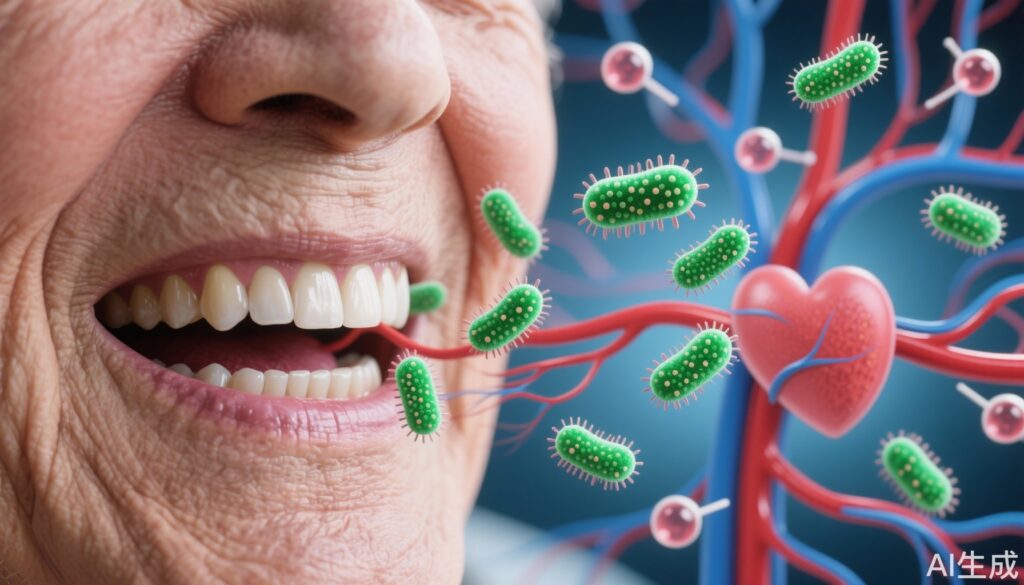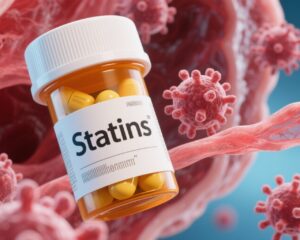Study Background and Disease Burden
Ageing is a major risk factor for cardiovascular disease (CVD), a leading cause of morbidity and mortality worldwide. Declines in vascular function, including increased arterial stiffness and elevated blood pressure, contribute significantly to this risk. Nitric oxide (NO), a critical vasodilatory molecule, plays a key role in vascular homeostasis, but its bioavailability diminishes with age, exacerbating vascular dysfunction. Dietary nitrate, abundant in vegetables such as beetroot, undergoes reduction by oral bacteria to nitrite and subsequently to NO in the systemic circulation, offering a promising non-pharmacological intervention to improve vascular health.
Emerging research highlights the oral microbiome’s crucial role as a mediator in nitrate metabolism, yet how ageing alters this microbial composition and its impact on NO bioavailability and vascular responses remains incompletely understood. This study addressed the clinical relevance of these interactions by investigating how ageing modifies the oral microbiome response to dietary nitrate and antiseptic mouthwash, and how these changes correlate with vascular function.
Study Design
This placebo-controlled, double-blind, cross-over intervention included 75 participants divided into two age groups: 39 young adults aged 18-30 years and 36 older adults aged 67-79 years, including both males and females. Participants underwent three separate two-week treatment phases, each separated by a two-week washout period: placebo beetroot juice (PL), nitrate-rich beetroot juice (BR), and antiseptic mouthwash (MW). The study evaluated the oral microbiome composition, plasma nitrite concentration (a surrogate marker of NO bioavailability), blood pressure (including brachial and central mean arterial pressure [MAP]), and flow-mediated dilatation (FMD) as a measure of endothelial function.
Key Findings
The oral microbiomes of young and older adults responded differently to dietary nitrate supplementation with BR. Specifically, non-metric multidimensional scaling analyses demonstrated significant alterations post-BR in the microbiome of older adults (P = 0.01), whereas the PL and MW interventions did not significantly impact microbiomes in either group.
At baseline, older adults exhibited elevated mean arterial pressure (MAP: 95 ± 9 mmHg) compared to younger adults (87 ± 7 mmHg; P < 0.001). BR supplementation led to a significant reduction in brachial MAP (-4 ± 4 mmHg, P = 0.003) in older adults, a vascular benefit that was not observed in the younger cohort.
Interestingly, flow-mediated dilatation (FMD) measures, which assess endothelial function, were unaffected by any interventions in the older group. However, in young adults, a statistically significant difference in FMD changes from pre- to post-intervention was observed between MW and BR treatments (ΔFMD% difference; P = 0.04), suggesting a more subtle vascular response modulated by oral bacterial activity in younger individuals.
At a biochemical level, reductions in blood pressure in older adults correlated with increased plasma nitrite levels (r = -0.41, P = 0.02). Moreover, the increases in plasma nitrite were associated with significant decreases in specific oral bacteria predominantly from the genus Prevotella: P. intermedia (r = -0.72, P = 0.001), P. dentalis (r = -0.88, P < 0.0001), and Crassaminicella sp. SY095 (r = -0.81, P < 0.0001). These bacteria are linked to ammonia production and are potentially harmful.
Collectively, these data suggest that the greater blood pressure lowering observed in older adults following dietary nitrate supplementation is mediated by a suppression of detrimental oral bacteria involved in ammonia pathways, thereby enhancing NO bioavailability and improving vascular function.
Expert Commentary
This study sheds light on the intricate relationship between the oral microbiome, dietary nitrate metabolism, ageing, and vascular health, corroborating the concept that the oral bacterial ecosystem is a vital modulator of systemic NO bioavailability. The differential microbial and vascular responses between young and older adults underscore the impact of ageing on both microbiota composition and vascular adaptability.
The lack of FMD improvement in older adults may reflect age-related endothelial dysfunction that is less amenable to short-term nitrate interventions compared to younger individuals. Nevertheless, the significant blood pressure reductions linked to microbiome changes emphasize dietary nitrate’s practical cardiovascular benefits in older adults.
Limitations include a moderate sample size and focus on a relatively healthy population, which may restrict generalizability to patients with existing cardiovascular disease. Additionally, longer-term studies are needed to establish sustained microbiome and vascular effects and to delineate mechanistic pathways fully.
Conclusion
Ageing modifies the oral microbiome’s response to nitrate-rich dietary supplementation, resulting in enhanced nitric oxide bioavailability and clinically meaningful reductions in blood pressure among older adults. The suppression of ammonia-producing Prevotella species appears to be a key mechanistic link mediating these vascular benefits. These findings highlight dietary nitrate as a promising, non-pharmacological strategy to mitigate age-related vascular dysfunction through modulation of the oral microbiome.
Future research should explore targeted probiotic or dietary interventions to optimize oral microbial profiles, extend observations to broader patient populations, and clarify long-term cardiovascular outcomes. Clinicians might consider the implications of oral hygiene practices and diet on systemic vascular health, especially in ageing populations at cardiovascular risk.
References
1. Vanhatalo A, L’Heureux JE, Black MI, Blackwell JR, Aizawa K, Thompson C, Williams DW, van der Giezen M, Winyard PG, Jones AM. Ageing modifies the oral microbiome, nitric oxide bioavailability and vascular responses to dietary nitrate supplementation. Free Radic Biol Med. 2025 Oct;238:682-696. doi: 10.1016/j.freeradbiomed.2025.07.002. Epub 2025 Jul 3. PMID: 40615058.
2. Larsen FJ, Ekblom B, Sahlin K, Lundberg JO, Weitzberg E. Effects of Dietary Nitrate on Blood Pressure and Endothelial Function: Focus on the Role of Oral Bacteria. Circ Res. 2010 Jun 11;106(5):456-66.
3. Hyde ER, Andrade F, Vaksman Z, et al. Metagenomic analysis of nitrate-reducing bacteria in the oral cavity: Implications for nitric oxide homeostasis. PLoS One. 2014 December 3;9(12): e110931.



